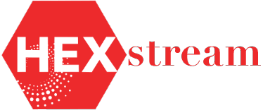Utilities Unplugged: Is LEC The Missing Link?
By Ashwini Nagendra Prasad, HEXstream Integrations Center of Excellence lead
As utilities navigate the massive shifts in energy—from centralized to decentralized, from fossils to renewable, from passive consumption to active participation—one thing has become painfully clear: our energy systems aren’t talking to each other fast enough.
We’ve got legacy infrastructure trying to sync with modern DERs. We’ve got microgrids, EVs, storage systems, and smart meters popping up like mushrooms after rain—but stitching all these pieces together into a unified, real-time grid?
That’s the hard part. And it begs the question: Is Oracle’s Live Energy Connect (LEC) the missing link?
What is Live Energy Connect (LEC)?
Oracle LEC is a high-performance, vendor-agnostic middleware platform designed to simplify and streamline grid data integration in real time.
In non-tech speak, it’s like a universal translator and traffic controller for utility systems—SCADA, EMS, DERMS, substations, cloud apps, IoT, you name it. LEC connects the dots between:
- Legacy OT systems and modern IT platforms
- Field devices and control centers
- Distributed assets and centralized operations
- Internal systems and external third parties (market operators, aggregators, etc.)
In essence: It brings intelligence to the edge and interoperability to the core.
Why t's potentially the missing link
Utilities aren’t lacking in data—they’re drowning in it. What they lack is real-time interoperability and actionable insights. LEC helps solve that in a few big ways:
Real-time data translation: LEC translates and routes data between hundreds of proprietary protocols and systems, eliminating silos and vendor lock-in.
DER integration without chaos: It enables fast, scalable integration of DERs—from rooftop solar to EV fleets—into existing operations without reinventing the entire grid.
Edge intelligence: With logic at the edge, LEC allows for local automation and faster decision-making (ideal for substation automation and microgrids).
Grid-modernization enabler: It’s not just a patch—LEC becomes the connective tissue for broader digital transformation strategies.
The challenges utilities face without it
Without a platform like LEC, utilities often struggle with:
- Outdated protocols that can’t scale
- Complex, brittle custom integrations
- Limited visibility into DERs and field assets
- Delayed control signals and data overload
In a world moving toward transactive energy and real-time balancing, that just doesn’t cut it.
Why LEC matters right now
The pressure is on. Grids are expected to be smarter, more flexible, cleaner and more secure. But no amount of hardware or policy can deliver all that unless your systems can communicate in real time across vendors, platforms, and layers.
That’s what LEC enables. It’s not just a data integration platform—it’s a strategic capability.
Final thought: Modern grid, modern glue
As the energy sector gets more complex, interoperability is no longer optional—it’s mission-critical. Oracle Live Energy Connect might not be the flashiest piece of tech in the utility stack, but it could be the most important one you don’t see. Because when everything’s connected, everything works better.
So yes...maybe it is the missing link.
